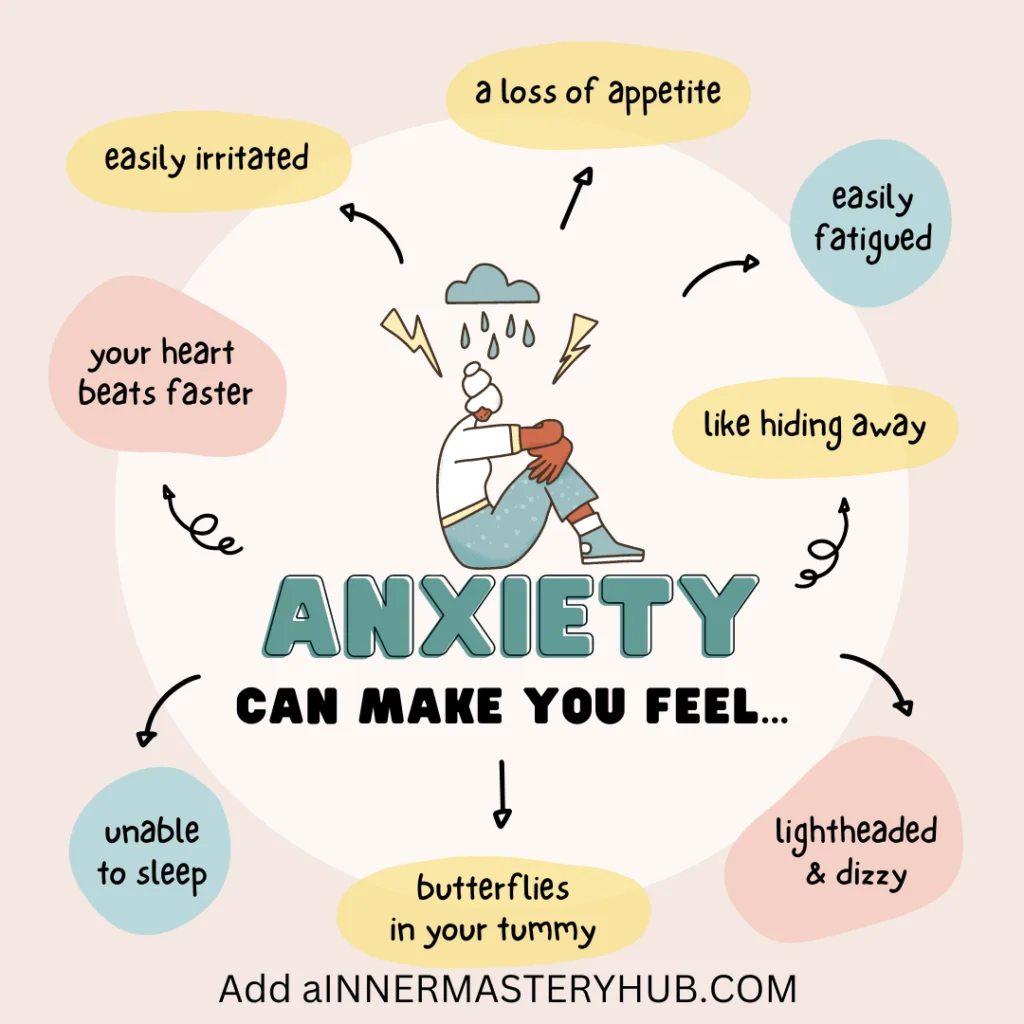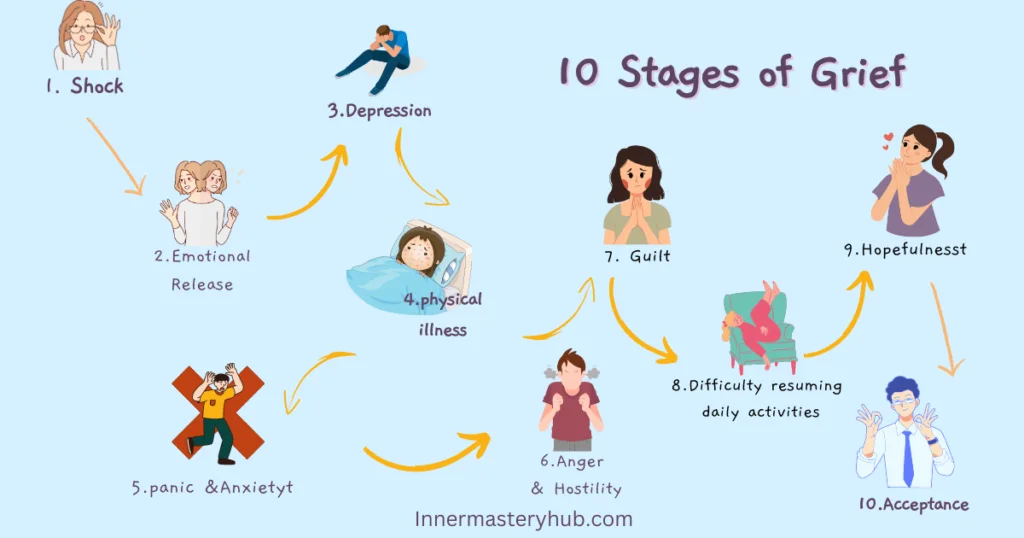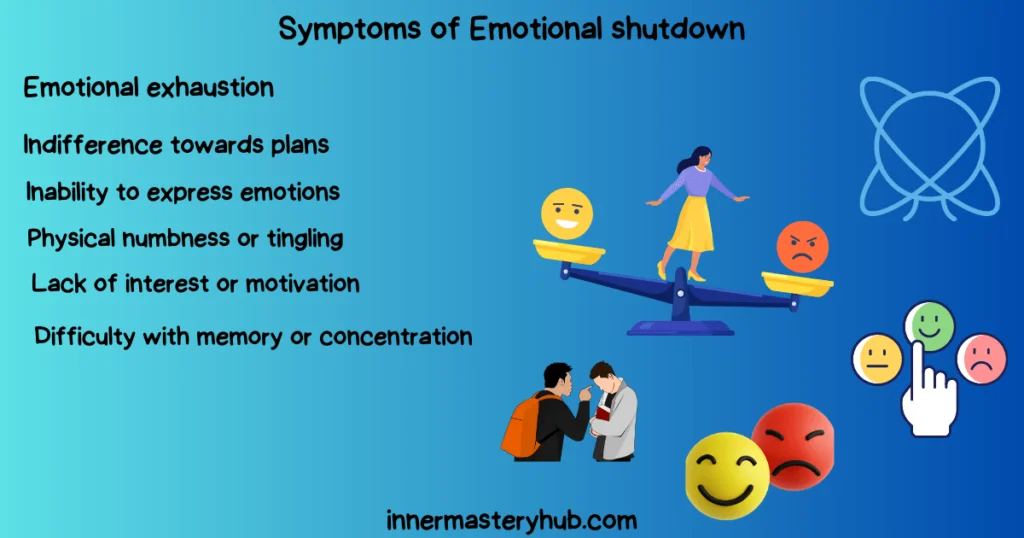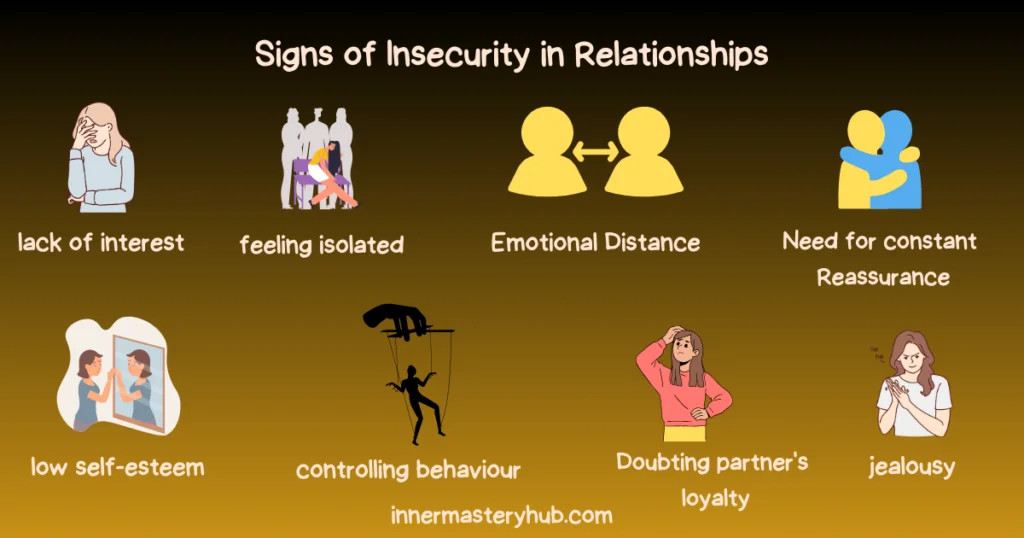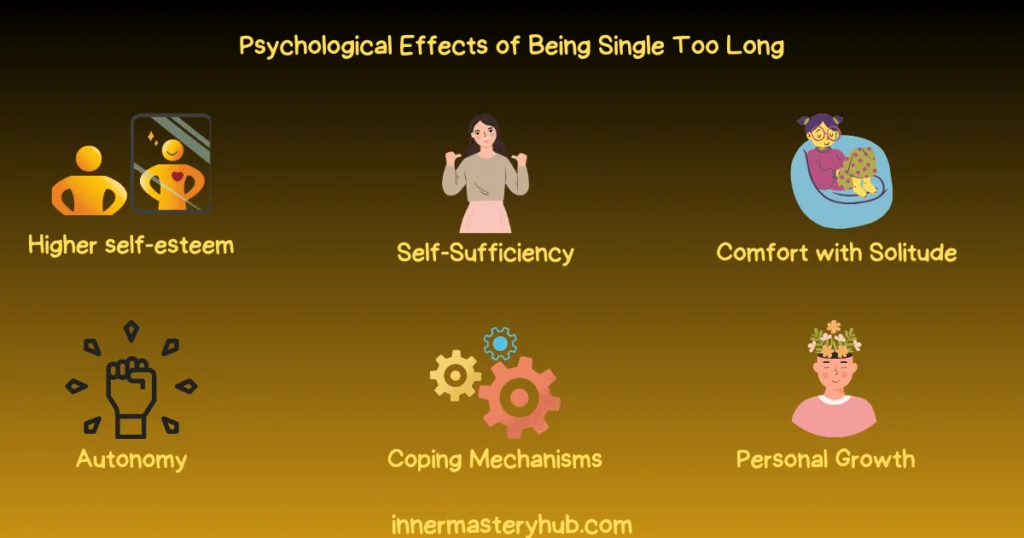
Hello there, buddy! Let’s look at a topic that may be familiar to many: the sometimes unsaid but widely experienced “cycle of shame.” We’ve all experienced that unpleasant pain of humiliation that seems to linger and repeat itself. But don’t worry; we’ll explore what this cycle is all about, how it impacts us, and, most importantly, how to break free from it in this blog. So saddle on and prepare to embark on this relatable adventure as we delve into understanding and breaking free from the cycle of shame.
RELATED: Breaking Free from Self-Abandonment
Table of Contents
What is the cycle of shame?
A trigger or mood that makes us feel shame starts the shame cycle. We usually start it when we think we’ve done something wrong or don’t satisfy our or society’s expectations. This causes deep shame—that unpleasant self-criticism.
That sensation drives ideas and actions. These may include self-blame, unworthiness, or hiding our flaws. This might consist of isolation, social withdrawal, or hiding perceived flaws.
You may feel like:
- I failed.
- Not worthy of happiness.
- I’m unimportant.
However, avoiding or hiding shame typically makes it worse. These activities encourage unpleasant sentiments, establishing a cycle. The more we hide guilt, the stronger it becomes, creating a cycle that’s hard to overcome.
Recognizing the triggers, ideas, and acts reinforcing shame is vital to understanding this cycle. Breaking the pattern requires noticing triggers, challenging negative beliefs, and seeking self-compassion and understanding to replace shame with healthier feelings and responses.
RELATED: Embracing Quiet Confidence
Causes Of Shame
Here are shame causes:
- Negative self-talk
- Rejection history
- Perfectionism
- Comparison to others
- Low self-esteem
- Trauma
- Mental illnesses include anxiety and sadness.
RELATED: Decoding Anxiety Neurodivergent
The Cycle of Shame loop
The shame cycle is a loop. This habit of opposing ideas and behaviors can lead to self-criticism and self-doubt. The cycle of shame starts with a trigger, an embarrassing incident, or a situation. This could be a mistake, criticism, or failure, leading to a cycle of shame.
When shame triggers, you may think negatively about yourself. Automatic, critical thoughts can cause worthlessness, solitude, and despair.
Avoidance may help you avoid these negative feelings. This may involve avoiding social situations, hobbies, or drugs to dull your feelings. Avoidance merely perpetuates shame. They shame you more, which fuels bad ideas and actions.
RELATED: Social Skills For Kids And How To Teach Them
Unmasking Shame
Shame masks our true emotions and objectives. To break the shame cycle, we must uncover our shame, go deep within ourselves, and ask tough questions.
Here are some questions to ask yourself to unmask the cycle of shame:
- What embarrassed me?
- What did I think and feel at first?
- What external causes caused me shame?
- What caused me disappointment internally?
The Difference Between Shame and Guilt
Shame and guilt stem from misconduct but have different causes and effects.
Shame is extreme humiliation and worthlessness caused by a sense of personal flaws. It might result in significant isolation and alienation from early rejection. Shame can lead to substance misuse, food disorders, and self-harm.
However, guilt is remorse and regret over a specific action or decision. It’s often accompanied by a desire to atone. Guilt can inspire people to take responsibility and improve their lives.
Link Between Addiction and Shame
Addiction and shame frequently spiral together. Shame can cause addiction, and addiction can intensify shame, making it hard to quit the cycle.
How Shame Causes Addiction
Shame can contribute to addiction in several ways:
Self-medication: Addicts may use drugs or alcohol to avoid humiliation. Their momentary relief may encourage addiction.
Low self-esteem: Shame can lower self-esteem, making addiction more likely. When people feel worthless or unlovable, they may turn to addiction.
Poor coping mechanisms: Shame can inhibit good coping strategies, making stress, anxiety, and other negative emotions harder to manage. People may use addictive substances or activities to cope with these emotions.
Shame can cause social isolation because people are ashamed to express their feelings and experiences. Isolation can increase shame and make addiction treatment harder.
RELATED: Understanding Codependency vs. Interdependency
How to Recognize When You Are in a Cycle of Shame
Addiction can induce shame in numerous ways:
1. Financial concerns, legal issues, and damaged relationships are expected outcomes of addiction. These repercussions might increase guilt and make addiction recovery tougher.
2. Addiction often leads to self-judgment and negative self-talk, which can increase shame. They may blame themselves for their actions, making it harder to get help or change.
3. Addiction can cause shame by causing a lack of control. Feeling powerless over their lives and conduct can make people feel embarrassed and hopeless.
4. Addiction stigmatizes people, making them feel embarrassed and alone. They may avoid help out of fear of judgment.
Self-destructive Behaviors That Shame Underlies
Shame is a powerful emotion that can cause self-harm. Shame explains these prevalent self-destructive behaviors:
Drug or alcohol abuse: People may use drugs or alcohol to avoid shame or emotions. This can cause addiction, which can harm their health, relationships, and employment.
Eating disorders: Shameful people may develop eating disorders to manage their weight or bodies. Malnutrition, dehydration, and organ damage might result.
Self-harm: Shameful people may cut, burn, or scratch themselves. They do this to vent their anguish and feel anything other than shame.
Social isolation: Shameful people may shun social interactions. Loneliness and isolation can worsen shame.
Risky sexual conduct: Shameful people may engage in risky sexual behavior to feel validated or escape. This can cause unplanned pregnancies, STDs, and other health issues.
Perfectionism: Shameful people may strive for perfection to prove themselves. Unrealistic expectations and constant failure can result.
A shameful person may procrastinate on critical chores to avoid feeling overwhelmed or inadequate. This can cause job or school issues and harm relationships. Scandalous people may put others’ needs before their own to avoid conflict or rejection. Resentment and burnout can result. Nefarious people may ignore their physical and emotional health to punish themselves. Fatigue, stress, and sadness can result.
RELATED: Childhood Emotional Neglect
How to Break the Cycle of Shame
A trained mental health coach or counselor can help you break the shame cycle and move on. Counseling can help you talk about your thoughts, identify triggers, reassess your self-worth, and let go of shame.
1. Talk about Your Feelings
Talking about your feelings is challenging but helps end the shame cycle. Speaking about your feelings acknowledges and expresses them. This can help you understand and heal from your emotions.
Break the shame cycle by talking about your feelings:
- Chat with someone safe and sympathetic. Choose a friend, family member, therapist, or other trusted person.
- Honesty about sentiments. Don’t downplay your feelings.
- Express your emotions with “I” statements. Instead of “You made me feel ashamed,” say, “I felt ashamed when you said that.”
- Proceed slowly. Not everything must be discussed at once. Start with a simple topic and progress to more complex ones.
- Be kind to yourself. Overcoming shame takes time. If you don’t see results right away, don’t give up.
- Question your negative thoughts. Are your self-perceptions accurate? Too hard on yourself?
- Find healthy ways to cope. Find healthy strategies to manage your emotions instead of self-harm. This could be exercise, meditation, family time, or journaling.
Get professional help. If you’re having trouble breaking the shame cycle, visit a therapist.
2. Be Aware of Your Triggers
Events, situations, and experiences can trigger your shame response and cause negative thoughts and feelings. Knowing your triggers helps you avoid guilt by anticipating and managing them.
These steps will help you identify shame triggers:
Find your shame: Consider past shameful events. What happened? What external and internal forces caused your shame?
Watch your emotions: Notice feelings of shame, inadequacy, or worthlessness. Which situations or thoughts usually cause these emotions?
Recognize physical sensations: Shame can cause chest tightening, blushing, and sweating, which may indicate a trigger.
Watch your behavior: Shame triggers may cause retreat, self-criticism, or substance abuse.
Avoid triggers: If you can predict a shame-triggering situation, avoid it or minimize exposure.
Develop coping mechanisms: Exercise, meditation, writing, or talking to a trusted friend or therapist can help you manage shame.
Challenge negative thinking: When shame triggers, challenge negative thoughts. Based on facts or warped beliefs? Change them to pleasant, realistic ones.
3. Learn to Reframe Your Shame
Reframing shame can lift you from shame’s negative and self-destructive cycles. By adjusting your perspective, you can see shame as a learning opportunity instead of a symbol of worthlessness. Reframing shame entails replacing negative shame beliefs with good ones. You can do this:
Understanding shame: Everyone feels shame sometimes. It means we did something wrong or broke a societal norm. When shame becomes internalized and self-critical, it can be a problem.
Shame is feeling flawed, while guilt is remorse for an action or decision. It’s vital to distinguish between guilt and shame, as guilt can motivate positive change while shame can be detrimental.
Challenge negative self-talk: Shame typically leads to negative self-talk that promotes a bad self-image. If it becomes a habit, this might boost self-esteem temporarily but undermine it long-term. Instead of dwelling on our mistakes, we should highlight our assets and abilities.
Connection: Shame can separate us, yet connecting with others can help us overcome it. Talking to a trustworthy friend, family member, or therapist can help us process our emotions and develop healthier coping skills.
Imagine being strong and resilient: Consider overcoming obstacles and reaching your goals. This might boost your self-esteem and challenge unfavorable self-perceptions.
Focus on progress, not setbacks: Everyone makes errors, but it’s crucial to focus on your development and enjoy your victories, no matter how minor. This can help you stay motivated and prevent getting frustrated.
Follow these steps to reframe guilt as a learning opportunity. This can help you break shame’s harmful tendencies and live happier lives.
Increasing Emotional Intelligence Can Reduce Cycle of Shame.
Addressing shame requires improving emotional intelligence. As people become more aware of their emotions and shame triggers, they can recognize and treat them earlier. Higher emotional intelligence helps people manage shame-triggered reactions and avoid cycle-repeating behaviors.
Empathy, a vital component of emotional intelligence, helps people treat themselves with kindness and understanding, creating self-compassion and a more favorable self-image in shame. Improved self-awareness and emotional expression remove shame’s isolation and increase support.
Adaptive problem-solving skills in higher emotional intelligence help manage shame triggers. Emotional intelligence helps people detect, comprehend, and manage shame, which leads to more adaptive reactions and breaks the shame loop, boosting emotional well-being.
RELATED: Emotional Resilience: 11 Strategies To Build it
When is it time to seek help?
Understanding when to seek help is vital when dealing with challenging emotions. When shame or low self-esteem affects your life, relationships, or mental health, seek expert help. Help may be needed if these emotions persist, intensify, or impair your work, relationships, or personal life.
Support is needed if self-management fails or you indulge in hazardous habits or self-isolation due to shame. Seeking support is a proactive step toward mental healing and well-being, not a show of weakness. Therapists, counselors, and mental health professionals can help you escape the shame cycle and recover control over your emotions and life.
Therapy For Breaking Shame Cycle
Therapy is essential for breaking shame. A controlled, supportive setting helps people deal with shame’s root causes. A qualified therapist helps people comprehend and analyze these painful feelings, causes, and triggers. Through therapy, people learn to question negative beliefs, replace self-criticism with self-compassion, and create healthier coping methods.
Therapy creates a secure space for people to share their experiences without judgment, developing understanding and support. It helps increase self-esteem, recognize strengths, and change shame-sustaining habits. By confronting and processing deep-rooted emotions, therapy helps people escape the shame cycle and achieve long-term emotional well-being.
Takeaway from InnerMastery
Breaking the cycle of shame and self-destruction is challenging but attainable. Psychotherapy, mindfulness, and support groups can help you overcome shame and self-harm.
The following resources may help:
Brené Brown TED Talk: Listening to Shame
How to Stop a Shame Spiral: A Perfectionism Project Podcast Episode “Shame: Free Yourself, Find Joy, and Build True Self-Esteem,” Joseph Burgo’s book

